Gold has always been more than just a glittering metal. For centuries, it has represented wealth, power, and security across civilizations. From being used as currency in ancient trade routes to serving as the backbone of modern financial reserves, gold continues to shine as one of the most influential and valuable commodities in the world.
Historical Significance of Gold
The history of gold is as old as human civilization itself. Ancient Egyptians revered it as the “metal of the gods,” while empires such as the Romans and Persians used it for coinage, jewelry, and trade. In South Asia, gold has long symbolized prosperity and purity, carrying immense cultural and religious importance. This deep-rooted legacy makes gold more than an investment—it is a part of human tradition, culture, and identity.
Gold as a Safe-Haven Investment
One of gold’s greatest strengths is its role as a safe-haven asset. During times of economic uncertainty, inflation, or currency devaluation, gold preserves its value. Unlike paper money, which can rapidly lose purchasing power, gold remains a reliable store of wealth. Central banks across the globe maintain massive gold reserves, reinforcing its significance as a financial safeguard.
Gold in the Modern Economy
Today, gold plays a pivotal role beyond jewelry and ornaments. Its applications extend across critical sectors:
Finance: Backing reserves and influencing currency stability.
Technology: Used in electronics, aerospace, and medical devices due to its high conductivity and durability.
Investment Markets: Traded in the form of bullion, coins, ETFs, and futures contracts.
Rising demand from emerging economies—particularly India, China, and Pakistan—underscores gold’s enduring appeal as both a financial asset and a cultural treasure.
Gold Prices and Market Trends
Gold prices are influenced by a range of global factors, including inflation, interest rates, geopolitical tensions, and currency fluctuations. Historically, when the U.S. dollar weakens, gold prices climb. Likewise, during crises such as wars, pandemics, or energy shortages, investors flock to gold as a safe and stable investment.
The Future of Gold
As global uncertainty increases, gold’s importance is expected to grow further. With its expanding role in technology, renewable energy, and wealth preservation, experts predict that gold will remain central to portfolio diversification, financial security, and cultural traditions in the years ahead.
Gold in Pakistan, the Middle East, and the Global Market: A Strategic Asset for 2025
Gold in Pakistan: A Cultural and Financial Lifeline
In Pakistan, gold is deeply woven into cultural traditions, especially in weddings, dowries, and festivals. Beyond its symbolic value, gold is now a crucial financial safeguard for individuals and families.
Inflation Hedge: With the Pakistani rupee under pressure and inflation surging, gold offers a shield of stability.
Market Dynamics: Gold prices in Pakistan are largely driven by international markets and the dollar-rupee exchange rate, making them a key indicator of economic health.
Future Outlook: As financial awareness grows, Pakistanis are increasingly investing in bullion, coins, and even digital gold for long-term wealth preservation.
Gold in the Middle East: A Symbol of Wealth and Strategic Power
The Middle East has long been a global hub for gold trade, with Dubai famously known as the “City of Gold.”
Cultural Value: Gold continues to play a central role in Arab weddings, dowries, and celebrations.
Investment Hub: Gulf investors view gold as a hedge against oil price volatility and global financial instability.
Strategic Role: Central banks in Saudi Arabia and the UAE are steadily increasing their gold reserves to strengthen economic security and reduce reliance on traditional currencies.
Gold in the Global Market: A Universal Safe-Haven Asset
On the international stage, gold remains a cornerstone of stability in 2025.
Safe-Haven Investment: Investors worldwide turn to gold in periods of political and financial uncertainty.
Technology & Industry: Demand for gold is expanding in electronics, green energy, and medical industries.
Central Bank Reserves: Nations are diversifying their reserves with gold to safeguard against currency risks and reduce dependence on the U.S. dollar.
Conclusion
Whether in Pakistan, the Middle East, or the wider global market, gold is far more than a precious metal. It is a cultural symbol, an investment safeguard, and a strategic financial asset. In 2025, its relevance is stronger than ever, cementing its role as a cornerstone for individuals, investors, and nations seeking security in uncertain times.



